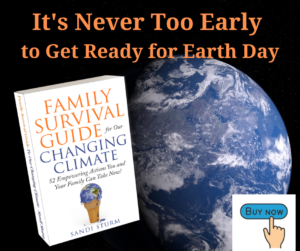Robert Gair invented the cardboard box back in 1871. It has been used ever since to deliver packages and products around the world. Today, the average person in the U.S. consumes around 446 pounds of paper and cardboard in a year. (2)
That is a huge number when you consider the number of resources and amounts of energy, water, and waste that goes into each cardboard box, which is part of the pulp and paper industry.
Lifecycle of a Cardboard Box
The life of a cardboard box begins in the forest where softwood trees are cut down, stripped of their bark, and turned into wood chips.
These wood chips are reduced even further into cellulose fibers in the pulping process. Natural oils are separated by adding fibers with water and creating a slurry. Now the fibers can be pressed and rolled into paper.
Every step of the way has a large carbon footprint from burning fossil fuels in transportation, manufacturing, and processing. There is also a large amount of water used and wastewater produced.
After using the cardboard box for its intended purpose, it can be recycled and used in the slurry process along with natural fibers. It might also end up in a compost bin or landfill.
One ton of cardboard requires 3 tons of wood, which is a good reason to reuse as many times as possible and then recycle. (1)
Environmental effects of paper production
Production – Globally, we produce 420 million tons of paper annually. That is about two pieces of paper every hour for everyone on Earth. One pound of paper requires 2-3 times its weight in trees (3).
Deforestation – As of May 1, 2021, 9.3 million hectares of forest has been destroyed either by cutting or burning. This number increases by about one tree every second. 55% of paper produced globally comes from newly cut trees. (3)
Energy use – The entire process of manufacturing paper is energy-intensive. The pulping process uses half of the energy, which turns wood chips into fibers. But every step in the lifecycle uses energy, which produces air pollution from fossil fuels, a significant cause of climate change.
Water use – The pulp and paper industry is the largest consumer of water in the western world. It takes about 2.6 gallons to produce an 8 ½ X 11 sheet of paper.
Pollution – Paper manufacturing emits significant greenhouse gases such as nitrogen dioxide (NO2), sulfur dioxide (SO2), and carbon dioxide (CO2). The pulp and paper industry is the third-largest industrial contributor to air, water, and land pollution in the United States. Studies show that it produces more than 220 million pounds of toxic pollution per year. (5)
The US EPA found that recycling paper creates 35% less water pollution and 74% less air pollution. (5) Actively reusing boxes will extend this process even further.
Waste – There has been a rise in cardboard sitting on the curb during the pandemic as more people order products online. A lot of this enters the landfill if no curbside recycling or collection program is available. Larger brick-and-mortar stores have collection systems in place, but millions of consumers do not.
Waste haulers in the U.S. are picking up 25% more waste from households since the pandemic and have seen a decrease of up to 30% from commercial customers. In a study conducted by Sustainable Packaging, up to 40% of households in the U.S. do not have access to curbside recycling programs.
According to the Cardboard Balers Organization, cardboard and paper make up over 40% of solid waste streams.
Waste Management estimates that 70% of cardboard boxes used commercially are recycled. This is essential because making new boxes requires a mix of recycled cardboard and virgin wood fibers.
Solutions
Let’s revisit a saying that was popular in the 1970’s – Reduce, Reuse, and Recycle
Reduce – As we discussed earlier, more cardboard is delivered to homes during the pandemic, but 40% of households do not have easy access to recycling. While ordering online, you may have the option to reduce the number of boxes arriving at your door by combining orders if they are coming from the same source. If your friend/family is ordering from the same places, consider combining orders, so they arrive in one box.
Reuse – How many times have you driven from store to store looking for boxes when you are moving or need to put some things in the attic? Sometimes you get lucky and reach the store before they throw the boxes into the compactor. Still, other times you find boxes stored outside in an open container, all limp from recent rain. Your community may have a service that offers a way to exchange and reuse boxes.
Recycling – If we recycle a ton of paper, we can keep 17 trees in the ground. Recycling also reduces the amount of fossil fuels needed in the entire lifecycle process from exploration, extraction, transportation, and manufacturing of tree pulp. Plus, it takes a lot less water to recycle paper than to create pulp from virgin pulp.
Recycling also keeps paper from entering the landfill where it is buried and unable to biodegrade.
“The concern is that when you have more [cardboard] transitioning to the home, it becomes more of an individual choice for consumers whether they recycle it,” says Rachel Kenyon, senior vice president at the Fibre Box Association, a trade group representing packaging manufacturers. “We really want to encourage consumers to recycle because we do need that fiber back. It does help us to make another box again.” (4)
Virgin cardboard can be recycled up to seven times. Each time the fibers get smaller and smaller. As the fibers degrade, manufacturers can use them to make paperboard, as in a cereal box.
The average box contains about 50% recycled materials. Recycling should not be the first choice. Reducing and reusing cardboard will reduce the resources needed to produce a new cardboard box, which impacts our environment significantly.
References
(1) https://www.recycling.com/cardboard-recycling/
(4) https://www.theverge.com/22219042/online-shopping-ecommerce-packaging-cardboard-boxes-recycling
(5) https://www.theverge.com/22219042/online-shopping-ecommerce-packaging-cardboard-boxes-recycling









